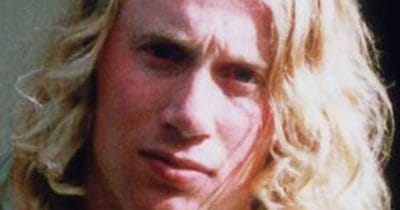
History can sometimes seem a little dry and boring, but sometimes amazing things are discovered that we can’t help being fascinated by. This is one such discovery.
By a small creek in Scotland, embedded and hidden among the green hills, there is a well tucked away secretly. It may not seem particularly impressive at first, but one step inside and you will be amazed at what you see.
Nearly a thousand years ago, this was a very important place, but it was later lost and buried under the sand. Nobody had a clue that this place ever existed, but when a terrible storm swept across the Orkney Islands in 1850, an incredible secret was revealed …
On the Orkney Islands off Scotland, embedded in mossy and green hills, lies a secret that is older than the great pyramids in Egypt.

At first it may not look liked much to the outside world, but the fact is that this place is unique.

Just on this green hillside, there is a very old underground city, perfectly preserved. The prehistoric settlement is called Skara Brae.

In the 1850s, the Orkney Islands suffered from a severe storm that caused great devastation and more than 200 deaths. But along with the bad comes some good. Because when the storm had passed, the farmers nearby discovered a settlement in the sand.

The settlement consists of eight stone houses and is estimated to be have been inhabited between 3180 and 2500 BC. Skara Brae is thus one of the oldest agricultural villages in Britain.

Skara Brae has been dubbed “Scotland’s Pompeji” due to the fact that the remains are so well preserved.
Because the surrounding sand and the architecture of the buildings are well protected from cold, both the buildings and their contents have been remarkably preserved over the millennia.

Archaeologists estimate that around 50-100 people lived in the village. Once the settlement was built, the houses were 1500 meters from the sea.
Around the houses lay suitable pastures for the settlement. Now the sea has carved its way closer to the village and created a magnificent view.

At its biggest, the settlement encompassed the seven or eight houses connected to each other via tunnels. Each residence could be closed off with a stone door.

In each room there is always one bed that is bigger than the others, but nobody is sure why. Each room also has lockers, bureaus, seats and storage boxes. These storage boxes were built to be waterproof, indicating that they may have kept live seafood inside the houses, probably to eat later.

One of the dwellings differs from the others. Here the archaeologists have not found any beds or other furniture. The house is believed to have served as a workshop

In the village there was also a sewage system and each house had its own, simple toilet.

Skara Brae was a society made up of families. The house constructions are quite similar, which made the archaeologists conclude that the society was fairly equal, without any authoritarian leadership.

Some believe the villagers were poets, a people of unknown origin who settled in eastern and northern Scotland during the final stages of the British Iron Age. But archaeological finds have shown that the people who lived here may have been far older than that.

A number of enigmatic findings have been made at the site. Among other things, a carved stone ball. Nobody is sure what it was used for.

Nobody knows why the village was abandoned. But around 2500 BC climate change caused the weather to be colder and more humid at the Orkney Islands. There are many theories that Skara Brae met a tragic fate. The most common theories is that there was a violent storm.

A conspiracy statement pointed out by, amongst others, Christopher Knight and Robert Lomas is that Stonehenge seems to have been abandoned at about the same time …

So what does the future hold for Skara Bra? Although the settlement was built almost two kilometers from the beach, it has increasingly been threatened by sea water in recent centuries. Since 1926, the houses are protected by a concrete wall against the approaching sea and the hard autumn storms.

Thre have been thoughts of building an artificial beach with stone blocks and breakwater to preserve the village, Skara Brae and several other ancient monuments that are at risk of destruction. But nothing has happened yet.
So far, tourists can continue to visit this fascinating place, but the question is how long for?

I really hope that Scotland’s government does everything it can to preserve this fascinating landscape.

I definitely want to go and see this fascinating place with my own eyes!
Make sure you share this little piece of human history with all your friends, so that more people get to see this wonderful discovery!
Published by Newsner. Please like.





